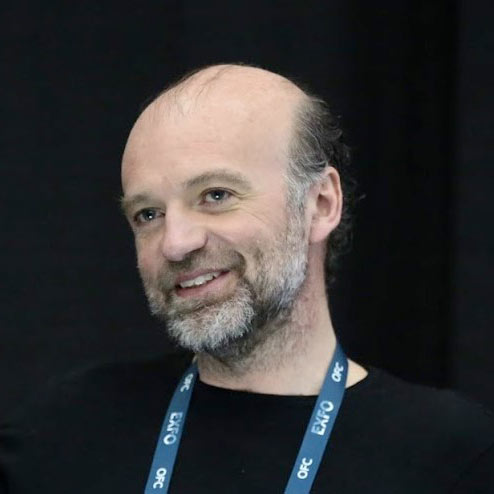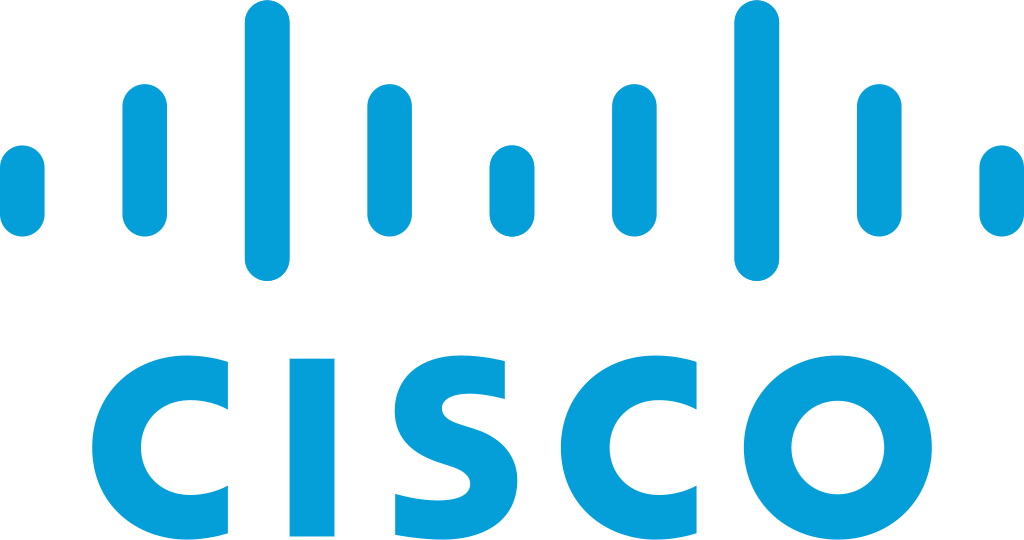Vittorio Curri
8 novembre 2023 - SESSIONE 3 | Beyond data services
Verso la Rete Ottica come Servizio abilitata dal Digital Twin del Livello Fisico
Advancing Towards Optical Network-as-a-Service Empowered by the Physical Layer Digital Twin

 Vittorio Curri ha conseguito la Laurea con lode in Ing. Elettronica e il Dottorato di Ricerca in Comunicazioni Ottiche presso il Politecnico di Torino (PoliTo). Attualmente ricopre la posizione di Professore Ordinario ed è stato Visiting Researcher presso la Stanford University e l'UCSB. Le sue attività di ricerca includono l'analisi dell'impatto del livello fisico su reti ottiche aperte e disaggregate, utilizzando tecniche di intelligenza artificiale, anche in scenari multibanda. È il coordinatore scientifico del progetto open source GNPy nel del consorzio TIP. È coautore di oltre 430 pubblicazioni scientifiche. È stato il PI in numerosi progetti finanziati da varie aziende e dall'UE. Ha supervisionato 25 dottorandi e diversi postdoc. È stato Guest Editor per SI in JOCN e JLT ed è membro di TPC di: ICTON, NetSoft, ANTS, APC-Networks, ONDM e ACP. Il Prof. Curri è stato relatore keynote e tutorial nelle principali conferenze IEEE e OPTICA. È Fellow OPTICA e membro senior dell'IEEE.
Vittorio Curri ha conseguito la Laurea con lode in Ing. Elettronica e il Dottorato di Ricerca in Comunicazioni Ottiche presso il Politecnico di Torino (PoliTo). Attualmente ricopre la posizione di Professore Ordinario ed è stato Visiting Researcher presso la Stanford University e l'UCSB. Le sue attività di ricerca includono l'analisi dell'impatto del livello fisico su reti ottiche aperte e disaggregate, utilizzando tecniche di intelligenza artificiale, anche in scenari multibanda. È il coordinatore scientifico del progetto open source GNPy nel del consorzio TIP. È coautore di oltre 430 pubblicazioni scientifiche. È stato il PI in numerosi progetti finanziati da varie aziende e dall'UE. Ha supervisionato 25 dottorandi e diversi postdoc. È stato Guest Editor per SI in JOCN e JLT ed è membro di TPC di: ICTON, NetSoft, ANTS, APC-Networks, ONDM e ACP. Il Prof. Curri è stato relatore keynote e tutorial nelle principali conferenze IEEE e OPTICA. È Fellow OPTICA e membro senior dell'IEEE.
 Vittorio Curri received his Laurea degree cum laude in Electrical Engineering and his PhD in Optical Communications from the Politecnico di Torino (PoliTo). He currently holds the position of Full Professor and has been Visiting Researcher at Stanford University and UCSB. His research activities include analyzing the physical layer's impact on open and disaggregated optical networking, employing AI techniques, also in multiband scenarios. He is the Scientific Chair of the GNPy open-source project within the TIP consortium. He has co-authored 430+ scientific publications. He has been the P in numerous projects funded by various companies and the EU. He has supervised 25 PhD students and several postdocs. He has served as a Guest Editor for SIs in JOCN and JLT and id TPC member of conferences such as ICTON, NetSoft, ANTS, APC-Networks, ONDM and ACP. Prof. Curri has been a keynote and tutorial speaker at major IEEE and OPTICA conferences. He is Fellow OPTICA and Senior member IEEE.
Vittorio Curri received his Laurea degree cum laude in Electrical Engineering and his PhD in Optical Communications from the Politecnico di Torino (PoliTo). He currently holds the position of Full Professor and has been Visiting Researcher at Stanford University and UCSB. His research activities include analyzing the physical layer's impact on open and disaggregated optical networking, employing AI techniques, also in multiband scenarios. He is the Scientific Chair of the GNPy open-source project within the TIP consortium. He has co-authored 430+ scientific publications. He has been the P in numerous projects funded by various companies and the EU. He has supervised 25 PhD students and several postdocs. He has served as a Guest Editor for SIs in JOCN and JLT and id TPC member of conferences such as ICTON, NetSoft, ANTS, APC-Networks, ONDM and ACP. Prof. Curri has been a keynote and tutorial speaker at major IEEE and OPTICA conferences. He is Fellow OPTICA and Senior member IEEE.
ABSTRACT
 Le tecnologie di rete stanno rapidamente avanzando per supportare la transizione verso architetture che integrano le tecnologie wireless avanzate con il trasporto ottico. Nella transizione verso l'era 6G ci si aspetta che le reti di accesso radio (RAN) gestiscano un altissimo volume di traffico per ogni antenna. Ciò richiede l'uso di tecnologie di rete ottica che coprano tutti i segmenti di rete, dalla reti RAN alla reti core e metro, già basate sulla trasmissione ottica. Inoltre, le connessioni ottiche WDM tra i data center si stanno rapidamente espandendo per supportare il cloud computing, richiedendo una gestione della rete in sintonia con gli altri segmenti di rete. Questa evoluzione richiede la completa virtualizzazione delle funzioni di rete e il controllo HW, consentendo il virtual slicing e l'adattamento dinamico delle operazioni per soddisfare le esigenze di traffico e servizio. Questa spinta verso un'architettura multi-layer semplificata, in transizione verso IP su WDM, sottolinea la necessità di questi progressi. Al centro di questa progressione c'è l'adozione di un gemello digitale del livello fisico indipendente dal fornitore, che comprende SBI e modelli di dati per gli elementi di rete, nonché interfacce aperte verso l'alto che si interfacciano con il controllore ottico e l'orchestratore di rete generale. Questo approccio olistico apre la strada a un ambiente più agile, adattabile e reattivo alle esigenze della tecnologia e dei servizi in evoluzione.
Le tecnologie di rete stanno rapidamente avanzando per supportare la transizione verso architetture che integrano le tecnologie wireless avanzate con il trasporto ottico. Nella transizione verso l'era 6G ci si aspetta che le reti di accesso radio (RAN) gestiscano un altissimo volume di traffico per ogni antenna. Ciò richiede l'uso di tecnologie di rete ottica che coprano tutti i segmenti di rete, dalla reti RAN alla reti core e metro, già basate sulla trasmissione ottica. Inoltre, le connessioni ottiche WDM tra i data center si stanno rapidamente espandendo per supportare il cloud computing, richiedendo una gestione della rete in sintonia con gli altri segmenti di rete. Questa evoluzione richiede la completa virtualizzazione delle funzioni di rete e il controllo HW, consentendo il virtual slicing e l'adattamento dinamico delle operazioni per soddisfare le esigenze di traffico e servizio. Questa spinta verso un'architettura multi-layer semplificata, in transizione verso IP su WDM, sottolinea la necessità di questi progressi. Al centro di questa progressione c'è l'adozione di un gemello digitale del livello fisico indipendente dal fornitore, che comprende SBI e modelli di dati per gli elementi di rete, nonché interfacce aperte verso l'alto che si interfacciano con il controllore ottico e l'orchestratore di rete generale. Questo approccio olistico apre la strada a un ambiente più agile, adattabile e reattivo alle esigenze della tecnologia e dei servizi in evoluzione.
 Networking technologies are rapidly advancing to support the transition to pervasive network architectures that integrate advanced wireless technologies seamlessly with optical transport. As 5G networks transition into the 6G era, ultra-high-capacity radio access networks (RANs) are expected to handle an unprecedented volume of traffic per antenna. This necessitates the use of optical networking technologies that span all network segments, from the RAN front-haul, to the core and metro-networks which have already been addressed. Furthermore, inter-data-center WDM connections are experiencing rapid expansion to support cloud computing, needing network management that harmonizes with other network segments. This evolution calls for the full virtualization of network functions and HW control, enabling virtual slicing and dynamic adaptation of virtualized operations to meet traffic and service demands. This drive towards a simplified multi-layer architecture, transitioning to IP over WDM, further underscores the need for these advancements. Central to this progression is the adoption of a vendor-agnostic digital twin of the physical layer, encompassing open SBI and data models for network elements, as well as open north-bound APIs and protocols interfacing with the optical controller and the overarching network orchestrator. This holistic approach paves the way for an environment that is more agile, adaptive, and responsive to the demands of evolving technology and services.
Networking technologies are rapidly advancing to support the transition to pervasive network architectures that integrate advanced wireless technologies seamlessly with optical transport. As 5G networks transition into the 6G era, ultra-high-capacity radio access networks (RANs) are expected to handle an unprecedented volume of traffic per antenna. This necessitates the use of optical networking technologies that span all network segments, from the RAN front-haul, to the core and metro-networks which have already been addressed. Furthermore, inter-data-center WDM connections are experiencing rapid expansion to support cloud computing, needing network management that harmonizes with other network segments. This evolution calls for the full virtualization of network functions and HW control, enabling virtual slicing and dynamic adaptation of virtualized operations to meet traffic and service demands. This drive towards a simplified multi-layer architecture, transitioning to IP over WDM, further underscores the need for these advancements. Central to this progression is the adoption of a vendor-agnostic digital twin of the physical layer, encompassing open SBI and data models for network elements, as well as open north-bound APIs and protocols interfacing with the optical controller and the overarching network orchestrator. This holistic approach paves the way for an environment that is more agile, adaptive, and responsive to the demands of evolving technology and services.








